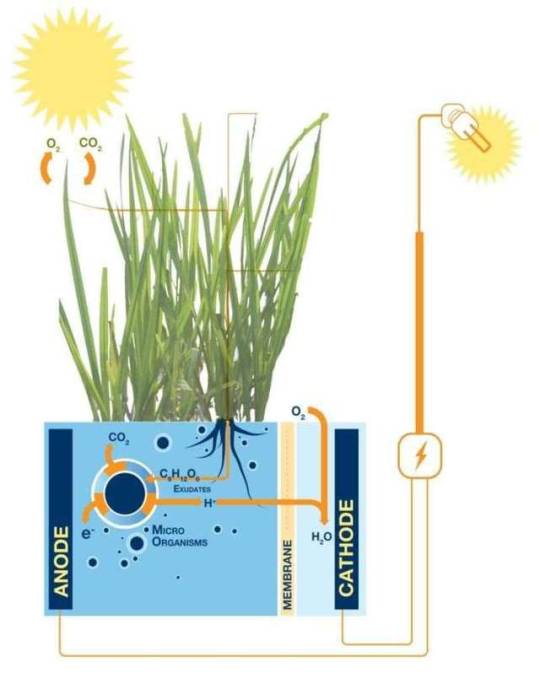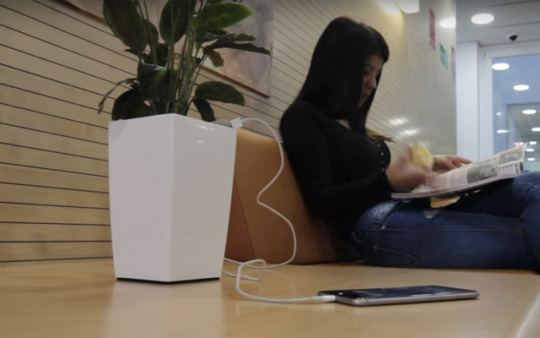#long bioos
Text
𝖼𝗁𝖺ə ─ 𝗋𝗒𝖾𝗈𝗇𝗀 ꓽ elegānt & belle
𝗌𝗁𝖾 ' 𝗌 𝖽𝖾𝗅𝗂𝖼𝖺𝗍𝖾 𝖺𝗇𝖽 𝗀𝗋𝖺𝖼𝖾𝖿𝗎𝗅 𝗅𝗂𝗄𝖾 𝖺 スワン
𝖼𝖺𝑓𝑓𝖾 𝖾 𝖺𝗆𝗈𝗎𝗋 ♡̶ 𝖼𝗁𝖺𝖾 𓈈 🌬 ꈍ 𐇵
𝖼𝗁𝖺𝖾𝗋𝗒𝖾𝗈𝗇𝗀 𝗀𝖺𝗏𝖾 𝗆𝖾 𝘱͟𝘦͟𝘵͟𝘶͟𝘯͟𝘪͟𝘢͟𝘴 : my heart
is as flower shop, and for her, it's always open
금성 ⠀: 𝗏͟𝖾͟𝗇͟𝗎͟𝗌 𝗀𝗈𝖽𝖽𝖾𝗌𝗌 𝖼𝗁𝖺𝖾𝗋𝗒 ? ★

#✿𝅼 レイン ー 𝖼𝗁𝗎𝗈𝗏𝖺#͏ ͏ ͏ ͏ ͏ ͏ ͏ ͏ ͏ ͏ ͏ ͏ ͏ ͏ ͏ ͏ ͏ ͏ ͏ ͏ ͏ ͏ ͏ ͏ ͏ ͏ ͏ ͏ ͏ ͏ ͏ ͏ ͏ ͏ ͏ ͏ ͏ ͏ ͏ ͏ ͏ ͏ ͏ ͏ ͏ ͏ ͏ ͏ ͏ ͏ ͏ ͏ ͏ ͏ ͏ ͏ ͏ ͏ ͏#long locs#bios#long bioos#short locs#itzy#lee chaeryeong#chaeryeong#itzy bios#itzy long locs#itzy short locs#itzy chaeryeong#chaeryeong bios#itzy random bios#chaeryeong long locs#layouts#symbols#users#icons
164 notes
·
View notes
Text
Artificial intelligence helps predict risk of complications in feet of diabetic patients

- By Fábio De Castro , Agência FAPESP -
A system deploying artificial intelligence and machine learning, developed by a startup based in São Paulo (Brazil), can help predict the development of complications in the feet of diabetic patients.
Diabetic foot occurs in 34% of patients with the disease and results in a mortality rate five times that of diabetics without this type of lower limb injury.
With support from the FAPESP Innovative Research in Small Business Program (PIPE), BIOO Inteligência Artificial has completed proof-of-concept research and begun a pilot project in partnership with Hospital das Clínicas (HC), the hospital complex run by the University of São Paulo’s Medical School (FM-USP), and InovaHC, its technological innovation center.
The pilot showed that the system can predict diabetic foot with over 85% accuracy. In October 2021, BIOO won the prize for Largest Development Potential awarded by the Innovation and Entrepreneurship Competition (Macao) for Technology Companies from Brazil and Portugal.
Work on the project began in 2018 and was led by the founders, orthopedist Bruno Sérgio Ferreira Massa and production engineer Fernando Mamam. They were joined in 2020 by computer scientist Leissi Margarita Castañeda León.
According to Massa, he and his founding partner first had the idea of developing a broad technological solution for use in treating several chronic diseases, but after a long period of maturation, they decided to focus on diabetic foot.
Massa is a clinician at the Albert Einstein Jewish Hospital and the Syrian-Lebanese Hospital in São Paulo and has had ample experience with diabetic foot since his residency at HC, while his partner, whose parents are both diabetic, also has first-hand knowledge about the challenges and complications of the disease. “This complication of diabetes, in particular, is extremely cruel,” Massa said. “When a patient develops diabetic foot, they’re very likely to require amputation, suffer from a worse complication, and even die.”
Diabetic foot is now the leading cause of amputations in emergency services – around 50%, ahead of injury and other causes, he added. Foot complications are present in up to 34% of the world’s 500 million diabetics, costing health systems USD 330 billion per year. The number of diabetics is expected to triple in the next 20 years.
“We know that 85% of foot complications could be avoided by early detection and prevention, but a third of physicians don’t recognize this type of injury, and 80% of the available data on patients is recorded in unstructured form,” Massa said.
Computation and medicine
To help process this set of complex and heterogeneous data and extract from it a method for predicting the problem, the partners looked for a specialist with experience in this type of challenge. “We invited Leissi, one of the most outstanding women in computer science, to join us, and thanks to her we were able to make a start on our Phase 1 PIPE project. From then on, the firm took off, with focus and interdisciplinary capabilities,” Massa recalled. BIOO now has a staff of six.
According to Leissi, the researcher responsible for the PIPE project, the algorithms that estimate whether a patient will have diabetic foot use machine learning to analyze structured data such as laboratory test results and unstructured data such as patients’ electronic health records with all their medical history. Unstructured data presents a daunting challenge, and Leissi had worked on this type of data in previous projects.
“We signed an agreement with HC to implement a pilot. The hospital supplied the initial datasets, mainly patient records and hospitalization data,” she explained. “The first thing we noticed was that while the conditions existed for the health records to be entirely structured, most of the information was recorded in a single column and was completed unstructured.”
In addition to the difficulty of processing unstructured data, the researchers encountered other problems, such as the presence of sensitive information, or codes that simply should not have been there and made the data somewhat chaotic.
“The team’s first challenge was to find out how to obtain knowledge from this data. It had to be cleansed, and we had to protect sensitive information while extracting knowledge from the mass of information,” Leissi said.
Big data
Using an array of data processing techniques based on different algorithms, Leissi worked with the firm’s staff and Massa’s medical expertise on the unstructured part of the data throughout the Phase 1 PIPE project. In Phase 2, she explained, the goal will be to integrate all the algorithms developed so far into the system, and shape it into a product. The results to date have been promising.
“In Phase 1, we completed the project feasibility analysis. Using the retrospective data supplied by HC, we were able to produce an initial risk classification with 85% accuracy in predicting foot complications in diabetic patients,” Leissi said. “The next step is to deepen the research to produce even more detailed results.”
The huge amount of patient data from HC used to develop the pilot is stored in the cloud, according to Leissi. “We’re working with retrospective data, and we have 14 years of information relating to HC’s endocrinology patients, with fresh data coming in every day. That’s why we have to store everything in the cloud.”
Proof of concept was the first step toward developing a system to predict foot complications in diabetic patients for use by public and private clinics, hospitals and other healthcare providers, she added. The proposed technology will enhance the prediction of at-risk patients, enabling physicians to make more assertive and personalized decisions, facilitating triage, and increasing the efficiency of resource utilization by health services.
“We’ve extracted different products for use in varying ways: a system for preventing and classifying risks, a data organization service, a system for managing and organizing protocols, and a system for prioritizing patients based on objective criteria,” Leissi said.
Precision medicine
According to Massa, a firm that specializes in data processing and analysis can change the physiological evolution of a health problem such as diabetic foot by ensuring that the problem is diagnosed as early as possible, improving prognosis, and enabling physicians to use the data to establish the right protocol for each case.
“By identifying patterns and risks for each patient, we can point the administrator or physician toward the best decisions and protocols,” he said. “If a patient has already had a foot injury, the risk of complications is greater. One of our differentiators is that we try to identify at-risk patients before their first injury.”
The goal is to make the system easy to implement and use. “It will be entirely cloud-based,” Leissi said. “We have data on a large scale, including clinical information and test results. We cleanse the data, protect sensitive information, and standardize everything so that it’s possible to create what we call a ‘biodataset’, which can be run through the algorithms for the purposes of analysis and prediction.”
According to Massa, the database will become increasingly robust over time and can be used not only in clinical care but also as an important tool in epidemiological studies. “Our processing permits risk prediction as well as analysis of the medical care process,” he said. “For example, it can identify a health service where cases have worse outcomes than the rest and see whether protocols are being adequately applied. More broadly, it will probably also start detecting patterns for other diseases.”
This text was originally published by FAPESP Agency according to Creative Commons license CC-BY-NC-ND. Read the original here.
--
Read Also
Annual foot test detects atrial fibrillation in diabetics
#foot#diabetes#feet#big data#ai#artificial intelligence#medicine#health#precision medicine#medtech#health tech#brazil#data science
4 notes
·
View notes
Photo





Electricity from Plants
Here’s some seriously cool science. Plant Microbial Fuel Cells (PMFCs) can derive solar energy from plants by mimicking biological interactions. Or in other words – this technology uses living plants instead of solar cells.
The idea is based on older technology, Microbial Fuel Cells, which use soil microbes to generate power. Plant microbial fuel cells go a step further. Living plants exude waste products into the soil, in the form of sugars and proteins. These waste products nourish bacteria in the soil for as long as the plant is alive and healthy, and their metabolism generates a current. You can find a more comprehensive explanation here.
Given that one of the most promising plants for this technology is rice (aquatic plants work best), this would provide both energy and a food source. On a smaller scale, a Bioo Light is a plant pot which will produce electricity, so you can charge your phone from a plant!
Take another look at some of that gorgeous Solarpunk artwork full of plants. Now imagine it with the plants themselves literally powering the society.

(artwork by Imperial Boy)
Links for scientists:
Deng, Chen, & Zhao (2011)
Nitisoravut & Regmi (2017)
Rabaey & Verstraete (2005)
Sophia & Sreeja (2017)
Wetser et al (2015)
747 notes
·
View notes
Photo

New song in BIOOS thIS completes The Trip Tape @diezontee @don_t562 @rigonorth "RIDE(THRU THE STORM AT NIGHT)" OUT NOW! THANK YOOU ALL FOR THE SUPPORTS AND MORE #thtrp #prplvsns #diezontee #don_t #rigonorth (at Long Beach, California)
0 notes